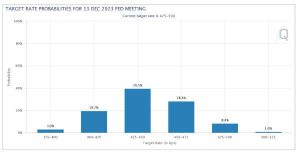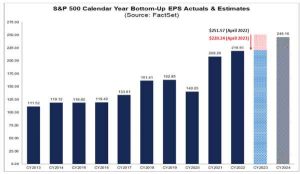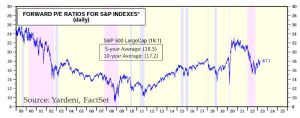2023 Technology Partner – Prudent Investors
As we try to make the financial system safer, we must inevitably confront the problem of moral hazard.
Ben Bernanke
Not Just the Economy

In just the last few years, many local communities are coping with a uniquely 21st century moral hazard created by the pandemic: youth on e-bikes. E-bike sales, which surged 240% from 2020 to 2021, have proven that America’s best selling electric vehicles come on two wheels. Supported by a battery and an electric motor, young riders are confidently zooming around neighborhoods at much faster speeds than they would on traditional bikes. Imbued with a false sense of invincibility, they engage in risky behavior such as darting between cars, violating traffic laws, and sometimes engaging in more sinister acts. In fact, at the end of last year, the New Yorker published an article entitled, “Hell on Two Wheels, Until the E-Bike’s Battery Runs Out.”
After 14 years of ultra-accommodative monetary policy that prompted greater risk-taking and drove the economy through a housing crisis in 2008-2010, a European debt crisis when Greece defaulted in 2015, and floored it through COVID-19, the Fed’s run out of gas. Battling dangerous levels of inflation, the economy now needs to function independent of monetary support from the central bank. Following numerous bailouts and rescue packages, we’ve become conditioned to expect the proverbial “Fed Put,” looking for the government rescue us from our economic woes. This mindset has instilled a false sense of security that will take some work to overcome. But now it’s time to get back to basics.
Calling the Fed’s Bluff
Is there evidence that investors may be holding onto a false sense of security? The bond market seems to indicate so. Investors are pricing in a greater than 90% chance of a 0.25% rate hike in early May, which would take the Fed Funds rate to 5.00-5.25%. Yet at the same time, the bond market is also pricing in a Fed Funds rate at 4.25-4.50% for December, essentially implying three 0.25% rate cuts by the end of the year.

This runs directly counter to comments made in February by Fed Chair, Jerome Powell, who remarked, “given our outlook, I just don’t see us cutting rates this year.” His colleagues in the central bank generally support that view. In March’s Summary of Economic Projections, 17 of the 18 Fed members believe the target rate will remain above 5% for the rest of the year (with one forecasting 4.875%). Many Wall Street analysts are also hawkish. Goldman Sachs and Bank of America are even anticipating an additional rate hike beyond May. Reuters polled 80 economists in February, and over two-thirds of them did not expect rate cuts in 2023.
Meanwhile, bond investors are singing a very different tune. Fed Fund futures are pricing in a first rate cut to come by September. Over the last several years, the Fed has indeed been somewhat quick to cut rates during times of uncertainty. But with inflation still elevated at 5%, we’ll see if their hands are tied this time.
Stock Market Expects Rate Cuts Too
While the bond market is pricing in rate cuts this year, stock market valuations seem to be implying rate cuts too. It may come as a surprise that stock valuations appear relatively expensive given that the S&P 500 is roughly 15% below its high. However, it’s worth noting that earnings forecasts have been cut dramatically over the last 12 months. For instance, at the end of April last year, FactSet estimated that S&P earnings for 2023 would be $251.57 per share. This month, FactSet forecasts that number to be just $220.24, representing a 12.5% decline in earnings expectations.

This reduction has put significant pressure on stock valuations. Using a price-to-(12 month forward) earnings measure, the S&P 500 is currently trading at an over 18x multiple. This may seem reasonable compared to a 5-year average at 18.5x and a 10-year average at 17.2x, but it’s worth bearing in mind that interest rates were considerably lower during those periods. To justify a market multiple at current levels, stock investors would likely need to see interest rates come down meaningfully.

Alternatively, a high market multiple could be justified through an optimistic view towards earnings growth, but the aforementioned reductions to profit estimates rather clearly suggests that this is not the prevailing outlook. Unless earnings surprise to the upside or the Fed changes its stance, stock valuations could come under pressure.
A Potential Canary in the Coal Mine
March’s short yet acutely turbulent financial crisis revealed challenges facing some of America’s mid-tier financial institutions. The failures of Silicon Valley Bank and Signature Bank, as well as the recent struggles of First Republic and Credit Suisse have shown that despite significant banking reform over the last 15 years, there still exist vulnerabilities in the financial system.
Although we saw both the Fed and Treasury take action to circumvent a full blown financial crisis, this time their focus was on rescuing the consumers (those holding deposits) – a different approach than that of 2008 when the banks were bailed out specifically.

Having seen the banking, auto, and airline industries receive bailout money in recent years, the government’s reluctance to rescue the banks, this time, may have represented a significant shift signifying that the lifeline is no longer there. The banks were allowed to fail for poor decision making.
You’re On Your Own This Time
Having learned from the inflationary period of the 1970s and 80s, the Federal Reserve is trying to avoid repeating the mistakes of that era: declaring victory over inflation prematurely and cutting rates too soon. In order to prevent the US from prolonging this inflationary period, their likely bias is to keep rates elevated for longer—to ensure they overcome inflation even at the potential expense of economic pain.
With a central bank motivated to keep monetary policy tight, the economy is on its own this time. How do you remove moral hazard? Bring accountability back.

Jeremy L. Lau serves as President and Chief Investment Officer. He teaches the Investment Management course for California State University, Fullerton’s Trustee Certification Program and frequently speaks on fiduciary investing to attorneys and fiduciaries across various associations. Before joining Prudent Investors, he worked as an Executive Director in investment banking in Tokyo and Hong Kong for Deutsche Bank AG and UBS AG in structured credit and convertiable bonds. He graduated in Accounting (with Honors distinction) from Brigham Young University and has earned the right to use the Chartered Financial Analyst (CFA®) and Certified Financial Planner (CFP®) designations.

Our Offices
San Diego
2598 Fortune Way, Suite G
Vista, CA 92081
Orange County
999 Corporate Dr., Ste 255
Ladera Ranch, CA 92694
Connect With Us
EMAIL – info@prudentinvestors.com
PHONE- 760.597.9255
FAX- 760.597.9259
ADDRESS- 2598 Fortune Way, Suite G
Vista, CA 92081
WEB- prudentinvestors.com
TWITTER @prudent_ria